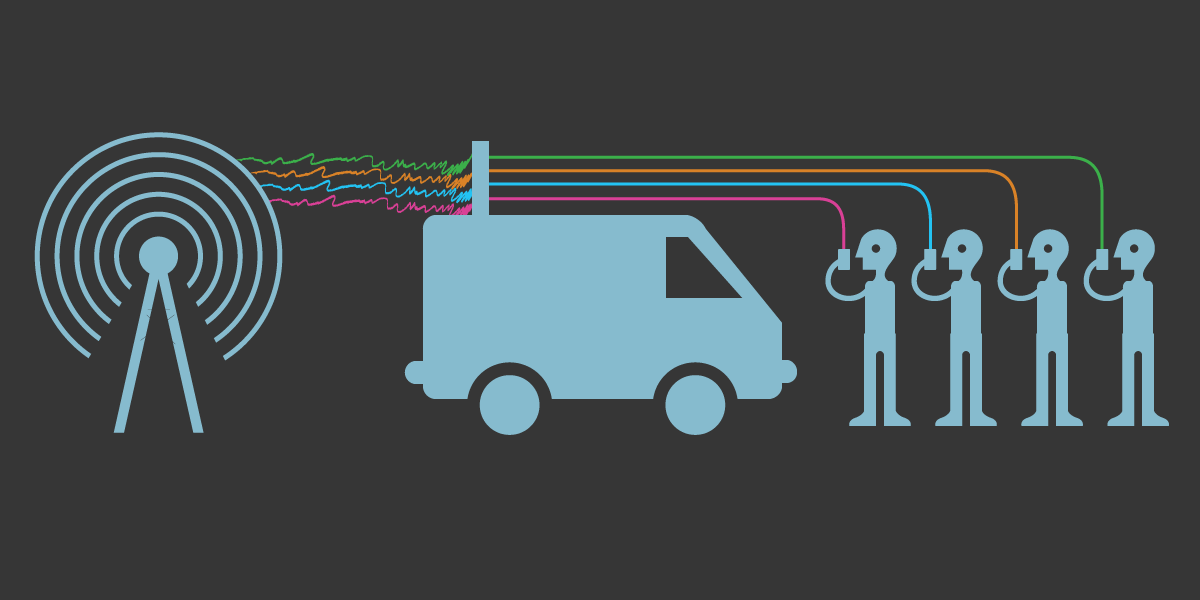CBC deserves full credit for exposing the presence of IMSI catchers in Ottawa. While this is only the beginning of the story, Canadians are starting to ask the right questions. Who is spying, why, and what are Canadian authorities doing about it?
Mobile devices (including phones, tablets, and 3G/LTE mobile hotspots) authenticate to the network, but there is no mechanism for mobile devices to authenticate the base station, making the entire system susceptible to classic man-in-the-middle (MITM) attacks. International Mobile Subscriber Identity (IMSI) catchers, often referred to by the brand name StingRay, exploit this weakness in the GSM specification to impersonate base stations. While Canadian agencies are only starting to admit owning the devices, they have existed since at least 2003, and range from high-power units suitable for fixed and mobile installations to concealed body-worn devices.
Surveillance device manufacturers are secretive about their products and features, but in general these devices are capable of metadata and content interception, as well denial of service and data modification attacks. Once a mobile device connects to an IMSI catcher (or any other base station), it obtains the mobile device’s IMSI, a unique global identifier.
In a simple scenario, an IMSI catcher can be used to identity mobile phones. By capturing data over time, individuals can be profiled. For example, by placing an IMSI catcher in range of Parliament Hill, a foreign intelligence agency could easily build a list of IMSIs regularly seen in the area. Combining that data with additional information, such as the House of Commons and Senate calendars, would make it possible to identify devices carried by Ministers, Members of Parliament, Senators, and their staff.
Once identified, mobile devices and the individuals who carry them can be effectively targeted. This could take the form of telephone call and mobile data interception. Other IMSI catchers could also be used to detect when targets enter a different location, and foreign intelligence agencies could leverage telephone networks to track targets.
Some IMSI catchers may be used to only collect IMSIs, but that approach is more problematic than it may appear. When a mobile phone is connected to an IMSI catcher without the ability to forward data to the real mobile network, mobile service is interrupted. This may alert targets, and has the potential to create serious public safety issues; calls to 911 would fail. This approach can also be used to disrupt communications and impact emergency response.
More sophisticated surveillance devices include the ability to forward outbound calls. Because base stations control encryption algorithm selection, they can force mobile phones to use no encryption or a weak algorithm. This allows calls to be intercepted, recorded, and forwarded on to the real telephone network. It is also trivial to selectively redirect outbound calls, SMS, and Internet communications to a different destination. Some products also incorporate direction finding functionality.
There is no legitimate need for IMSI catchers in Canada. While law enforcement agencies may disagree, the indiscriminately wide net cast by these devices creates serious privacy and public safety concerns. Rather than spoofing base stations, law enforcement should seek appropriate judicial approvals and obtain information directly from telephone network providers.
Back in 2006, Mark Klein, a former AT&T technician, exposed the telecom’s Internet surveillance cooperation with the NSA. This certainly impacted Canadian Internet communications, much of which still flows via the USA. More recently, Edward Snowden leaked classified information pertaining to surveillance operations of the NSA and US allies, including Canada. Even the Canadian Security Intelligence Service (CSIS) has issued public warnings related foreign government interference in Canada. Canadians must take a more active role in protecting themselves, their businesses, and their country.
It should be obvious to even casual observers that Canada is a target of foreign surveillance. Considering the concentration of politicians, senior bureaucrats, and embassies in the nation’s capital, the presence of IMSI catchers in Ottawa is hardly a surprise.

